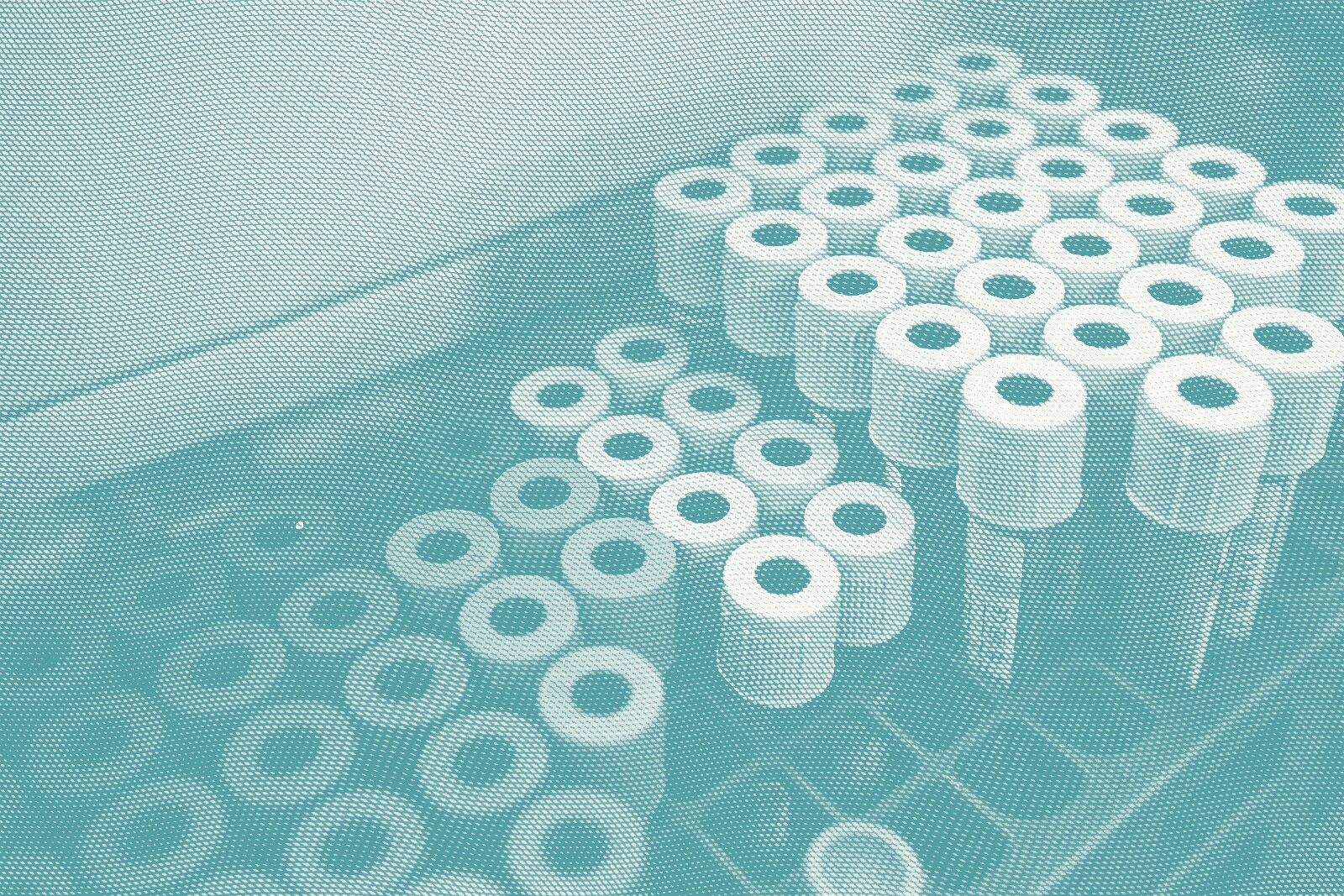All About Blood Tests for Breast Cancer

Is there a blood test for breast cancer? BCRF answers this question and shares the latest on liquid biopsy research
Blood testing became more widespread after the 19th-century discovery that there are different types of blood cells. Through the years, blood tests have evolved as researchers uncovered more details about blood cells and found other factors circulating in the blood that can give doctors clues about a person’s health.
In cancer care today, blood tests are used to detect or monitor the disease, with the prostate-specific antigen (PSA) test for prostate cancer being the most well-known. There are also blood tests for pancreatic cancer and blood cancers called multiple myeloma.
But are there blood tests for breast cancer? Will breast cancer show up in blood tests? Here, BCRF answers these questions, discusses what we can learn from blood tests for breast cancer, and highlights Foundation-supported research in this promising field.
A brief overview of blood tests for breast cancer
Doctors perform blood tests for many reasons, since much can be learned from them, including about breast cancer. Over the course of treatment for breast cancer, a patient may undergo routine blood tests, such as liver function tests and platelet counts, to monitor her health and how she’s responding to treatment.
Doctors are also currently using blood tests for breast cancer diagnosis, treatment, and recurrence surveillance. But it’s important to note that they are aren’t currently conclusive—they complement other tools and tests. For instance, a test for carcinoembryonic antigen (CEA), a protein detectable in the blood, can indicate the presence of several forms of cancer, including breast cancer. The only blood test specific to breast cancer looks for the cancer antigen 27.29 (CA 27.29). These tests are only used as aids in making a diagnosis, monitoring treatment progress, or determining if the cancer has spread.
Researchers are studying ways to expand the use of blood tests for breast cancer detection, and/or to determine if a patient’s breast cancer has recurred, progressed, or metastasized. Recently, researchers have examined how blood tests can be leveraged to monitor treatment progression—and personalize how patients are treated in real time. This is especially important for metastatic breast cancer.
Researchers have also discovered other factors in the blood called biomarkers or tumor markers: proteins, hormones, or genes/genetic mutations that can be signs of cancer. The aforementioned CEA and CA 27.29 tests are biomarker blood tests. Research continues to progress so that in the future there will be definitive blood tests for breast cancer, but on the way, tumor biomarker discovery can yield more and more information so that blood tests can help doctors during patient evaluations and treatment decision-making.
Liquid biopsy explained
Tests that detect evidence of cancer in a simple blood draw are called liquid biopsies. Decades ago, researchers made key discoveries about tumors and tumor cells that led to novel liquid biopsies for cancer detection. They found that individual tumor cells called circulating tumor cells (CTCs) can be sloughed off from the tumor itself into the blood and that fragments of tumor DNA called circulating tumor DNA (ctDNA) can also be shed. Researchers built on these discoveries to develop liquid biopsy technology to detect these factors in the blood.
Notably, ctDNA that tumors shed into the blood contains the same genes and gene mutations as the tumor itself. Thanks to the groundbreaking Cancer Genome Project and new sequencing technologies, more and more information is being gleaned about cancer-specific genetic mutations. A simple blood draw, with subsequent analysis of the within, can uncover valuable information about a person’s breast cancer, like what specific mutations are associated with their disease.
Liquid biopsy is thus gaining traction as a highly sensitive and specific test for ctDNA and may serve as a useful tool in breast cancer diagnosis and early detection.
Blood tests for early detection of breast cancer
Early detection is key to positive outcomes from all cancers, including breast cancer. That’s why researchers are investigating ways to gain more information from noninvasive blood tests, which are widely available in clinical practice.
At this time, there is not an approved blood test for early detection of breast cancer that could replace something like a mammogram. Blood tests may provide evidence of breast cancer and are used as aids in diagnosing the disease or detecting recurrence; the CEA and CA 27.29 blood tests for breast cancer are examples.
Indeed, there are no approved early-detection screening tests for most cancers, but multi-cancer early detection (MCED) tests have recently received much attention. In addition to circulating tumor DNA (ctDNA) detection, these blood tests can identify other pieces of DNA—such as cell-free DNA—and proteins specific to cancer cells.
MCED tests have the potential to find several cancers, so many different companies are developing and testing them. While not FDA approved, one MCED test—the Galleri test developed by the healthcare company GRAIL—is available by prescription. The Galleri test leverages two biological processes, DNA shedding and methylation, coupled with machine learning algorithms to analyze blood samples and potentially determine if cancer is present. In some cases (the approximately one percent of patients that screen positive), Galleri testing can predict the cancer’s origin.
In November 2024, another MCED test, CancerSeek, was FDA approved as a companion diagnostic for breast cancer. This test can identify genetic alterations in 228 genes, including the PIK3CA gene in breast cancer.
Many other pharmaceutical companies are developing MCED tests. But remember: The results they provide are not definitive. A positive result must be confirmed with diagnostic procedures to pinpoint where the suspect DNA or proteins originated in the body. If breast cancer is suspected, mammography screening would be the next step. A negative result does not rule out cancer.
Blood tests for treatment decision-making and monitoring
As investigators gain important genomic insights through circulating tumor DNA (ctDNA) analysis, liquid biopsy can be leveraged to inform doctors’ treatment plans and decisions about targeted therapy, immunotherapy, or clinical trials.
Liquid biopsy technology and ctDNA analysis can also be leveraged to accurately monitor tumor progression and prognosis. Researchers are investigating the implications of ctDNA in the blood during treatment and after. Their results indicate that a sustained decrease in ctDNA following treatment predicts a better prognosis for patients with breast cancer. Other studies are ongoing to follow a person’s progress during treatment so that their plan may be adapted if the ctDNA levels in their blood are not decreasing. Thus, monitoring ctDNA for early insights into how a patient is responding to treatment is potentially a useful strategy to improve breast cancer outcomes overall.
Blood tests for breast cancer recurrence
The sensitivity of liquid biopsies can also be leveraged to predict the likelihood of breast cancer recurrence, as ctDNA analysis has been shown to detect minimal residual disease or evidence of cancer remaining immediately after treatment or even later. In fact, many studies indicate that detectable ctDNA/minimal residual disease predicts recurrence with high sensitivity and specificity, many months before standard imaging follow-ups such as PET scanning.
One such test is the Signatera™ Residual Disease Test for ctDNA/minimal residual disease detection. Developed by Natera Inc., Signatera™ has been granted “Breakthrough Device” approval by the FDA and is the first personalized blood test for people who have been diagnosed with breast cancer or other solid tumors. From initial blood and tissue samples, the unique mutational signature of each patient’s tumor is identified, and a personalized assay is designed. This assay can then be used on subsequent blood samples to track the patient’s specific tumor mutations and accurately monitor them for the presence or absence of the disease over time.
Still, ongoing studies are needed to specifically correlate levels of ctDNA in blood samples with patient outcomes—results that can help finetune our understanding of what different levels mean and how reliably and accurately they predict breast cancer recurrence.
Blood tests for drug development
An interesting application of liquid biopsy recently emerged in the drug development arena. Clinical trials are an essential part of the process of approving drugs, and researchers diligently plan protocols for these trials that accurately test each drug.
In 2024, the drug inavolisib (Itovebi®) was FDA approved for treating hormone receptor–positive/HER2-negative breast cancer that has a specific gene mutation, PIK3CA. Selecting the appropriate patients—those whose breast cancers had a PIK3CA mutation—was a critical element of the clinical trial.
The FoundationOne® Liquid CDx test was used to analyze over 300 genes in ctDNA from patient blood samples, helping investigators determine which patients carried the PIK3CA mutation and would therefore be good candidates for inavolisib. Based on the positive results of the clinical trials, the FoundationOne® Liquid CDx test was also FDA approved as a companion diagnostic alongside the drug. This is one example of how blood tests can be leveraged to accelerate and inform drug development pipelines.
How BCRF is advancing blood tests for breast cancer care and management
BCRF investigators are at the forefront of discovery, including pioneering liquid biopsy research to learn as much as we can about a patient’s breast cancer from a simple blood draw. Here are just a few strategies under investigation:
- Leveraging liquid biopsy technology to guide treatment selection, switching, increase, or decrease based on a patient’s response—all in real time
- Developing more sensitive liquid biopsy techniques that could potentially serve as screening tools to detect breast cancer early and direct therapy at all stages
- Analyzing cfDNA in patients who harbor mutations in breast cancer-associated genes to serve as a screening tool to detect cancers at earlier and more curable stages
- Seeking ways to exploit information obtained from CTCs to non-invasively guide and monitor effective cancer treatments in patients with metastatic breast cancer
- Developing and testing a unique liquid biopsy test to detect exosomes, which are small particles secreted by cancer cells into the blood—a method that potentially has few limitations in specificity and sensitivity compared to standard mammography for breast cancer detection
We can already see the value liquid biopsy brings to the clinical setting. These important developments are the results of decades of research and scientific advancements. And it will continue as BCRF investigators and others leverage a multitude of strategies. Innovation in blood tests for breast cancer will no doubt refine doctors’ ability to make informed, personalized treatment decisions for their patients and improve breast cancer outcomes.
Selected References 
Alix-Panabières, C., Marchetti, D., & Lang, J. E. (2023). Liquid biopsy: from concept to clinical application. Scientific Reports, 13(1). https://doi.org/10.1038/s41598-023-48501-x
Center for Devices and Radiological Health. (2023, July 25). FoundationOne Liquid CDX (F1 Liquid CDX) – P190032/S010. U.S. Food And Drug Administration. https://www.fda.gov/medical-devices/recently-approved-devices/foundationone-liquid-cdx-f1-liquid-cdx-p190032s010
Mullard, A. (2024). FDA approves PI3Kα inhibitor that does double duty as a degrader. Nature Reviews Drug Discovery, 23(12), 885. https://doi.org/10.1038/d41573-024-00176-3
Stetson, D., Labrousse, P., Russell, H., Shera, D., Abbosh, C., Dougherty, B., Barrett, J. C., Hodgson, D., & Hadfield, J. (2024). Next-Generation Molecular Residual Disease assays: Do we have the tools to evaluate them properly? Journal of Clinical Oncology, 42(23), 2736–2740. https://doi.org/10.1200/jco.23.02301
Turner, N. C., Im, S., Saura, C., Juric, D., Loibl, S., Kalinsky, K., Schmid, P., Loi, S., Sunpaweravong, P., Musolino, A., Li, H., Zhang, Q., Nowecki, Z., Leung, R., Thanopoulou, E., Shankar, N., Lei, G., Stout, T. J., Hutchinson, K. E., . . . Jhaveri, K. L. (2024). Inavolisib-Based therapy in PIK3CA -Mutated Advanced Breast Cancer. New England Journal of Medicine, 391(17), 1584–1596. https://doi.org/10.1056/nejmoa2404625










